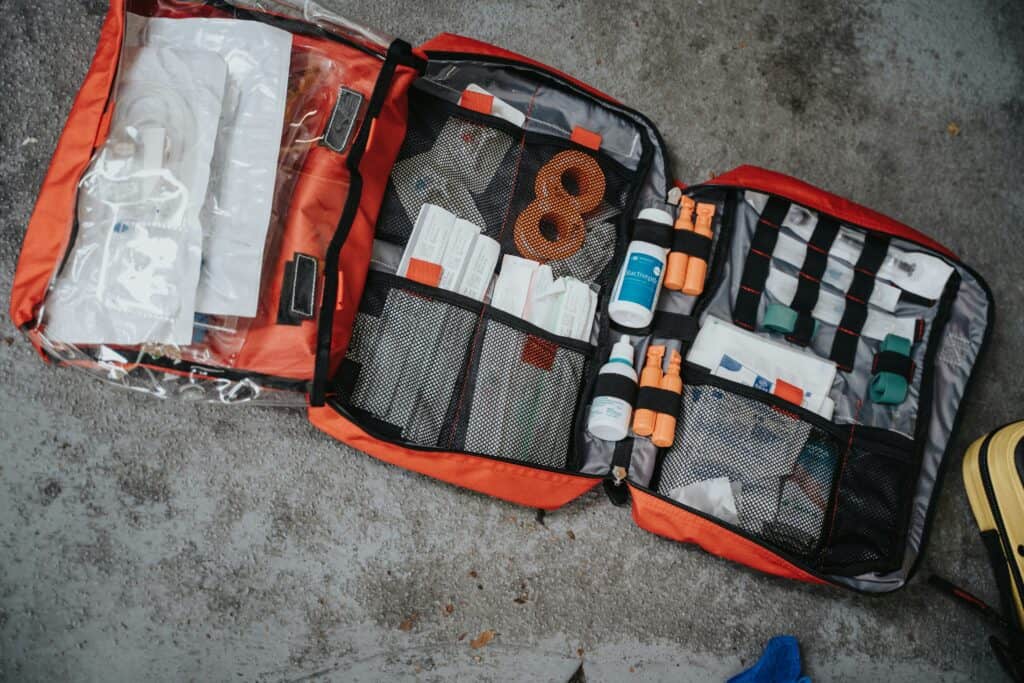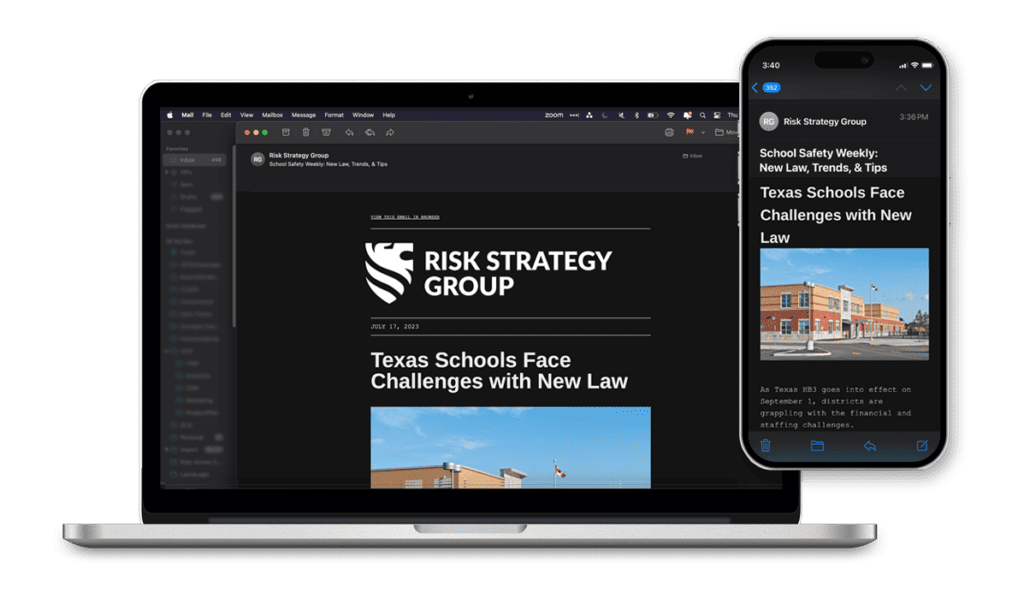Social media has become a large part of our lives, enabling people from all corners of the world to connect.
Despite the potential for positive engagement and discourse, these platforms also harbor potential threats, as they offer a means for individuals to communicate, plan, and execute dangerous activities.
One such type of communication is leakage, whereby an individual either knowingly or unknowingly reveals signs of their harmful intentions or planned violence through social media.
Leakage can manifest in various forms, such as online posts, messages, or shared images that signal an individual’s intent to harm others.
These troubling signals can range from explicit threats to ambiguous comments or cryptic behavior that may suggest a propensity for violence.
Given the widespread usage of social media, threat assessment professionals must be vigilant in recognizing, evaluating, and responding to leakage as an early warning sign for potential violence or harm.
Developing effective threat assessments in the age of social media requires adapting to emerging online behavioral patterns and staying informed about the evolving landscape of threats and challenges.
Leveraging tools and techniques designed to detect, analyze, and interpret social media sentiment and messaging can significantly enhance the process of identifying potential threats.
By acknowledging the role of leakage on social media platforms, threat assessment professionals can take proactive steps to prevent and mitigate the risks associated with harmful intent.
Understanding Leakage in Social Media
Definition and Importance
Leakage in social media refers to the unintentional sharing of sensitive or private information, which may pose a potential threat to an individual or organization.
This phenomenon occurs when users disclose particular details, either consciously or unconsciously, that may reveal future harmful actions or intentions.
The importance of identifying and understanding social media leakage lies in its potential to aid in the prevention of violent acts, cyber threats, and other harmful behavior.
By monitoring online content for signs of leakage, law enforcement agencies, organizations, and individuals can take proactive measures to mitigate risks and protect themselves from harm.
Communication and Intent
The intent behind such communication can vary from a subtle warning to a more explicit announcement of future harmful actions.
Online content that includes leakage may provide clues about an individual’s intentions, beliefs, or plans.
For example, a series of messages posted on a social media platform could indicate plans for a cyberattack, or active killer event, or a video may reveal a person’s radical ideology.
Potential indicators of leakage might include:
- Specific language or terminology related to harmful acts
- Discussion of means to carry out a planned action
- Expression of discontent, anger, or revenge toward an individual or group
Understanding the nuances of communication and intent can help authorities, organizations, and individuals detect and respond to potential threats to public safety, cybersecurity, and personal well-being.
The Role of Threat Assessments
Leakage in Threat Assessment Process
In the context of threat assessment, leakage serves as a warning sign that could help in identifying potential threats, even before they take place.
Social media platforms enable individuals to post their thoughts, plans, and feelings, which may contain leakage points that could be used for threat assessment.
Leakage analysis in threat assessment helps professionals to recognize potential threats by analyzing the themes, patterns, and frequencies of an individual’s social media content.
This includes examining posts, tweets, comments, or direct messages that might reveal intentions or plans to cause harm.
By closely monitoring such content, threat assessment teams can identify individuals who are in varying stages of planning and executing harmful acts.
The Importance of Context
When assessing threats, the context is crucial in distinguishing between harmless expressions and alarming patterns that might indicate the intent to cause harm.
Analyzing the context involves examining various factors such as:
- The individual’s background, including past incidents or criminal records
- The nature of the relationships between the individual and their targets
- The circumstances surrounding the individual’s communications, such as recent events or ongoing disputes
A thorough understanding of these contextual factors will help threat assessment professionals to interpret the leakage more accurately and determine the urgency of the threat.
To ensure a comprehensive analysis, threat assessors should consider various elements within the context of the information:
- Time frame: Assess the proximity of the threat to its potential execution date, considering whether it coincides with significant events or anniversaries.
- Relevance: Analyze the content’s relevance to the specific threats, targets, or potential harm it might cause.
- Frequency: Identify repeated patterns or themes in the individual’s communications, which could escalate the level of concern.
By examining these aspects, threat assessment professionals can better discern the intentions and risks posed by an individual, leading to more informed decisions and, ultimately, preventing harm or mitigating potential threats.
Identifying Leakage Warning Behaviors
Tone and Language
One way to identify leakage warning behaviors is by analyzing the tone and language used by an individual on social media platforms.
The focus should be on detecting whether the person exhibits any form of aggression, hostility, or fascination with violence.
Pay attention to statements relating to potential violent acts, resentment, or expressions of grievance.
Monitoring the words, phrases, and patterns used by the person can help in identifying possible signs of a threat.
Warning Signs and Indicators
Several signs and indicators can help professionals identify leakage warning behaviors.
Some of these warning signals include:
- Excessive interest or fascination with violence, weaponry, or recent violent incidents
- Sudden change in communication patterns, such as increased rage, aggression, and boasting about violence or harm
- Expressions of hopelessness, isolation, and revenge
- Specific threats directed toward identifiable targets
- Formation of a group or seeking support for violent ideas
- Frequent sharing or posting of content related to violence or violent themes
Actions to Mitigate Risks
Once a potential threat has been identified through leakage warning behaviors, there are several actions that can be taken to mitigate the risks associated with the individual and prevent violent incidents.
These actions include:
- Monitoring and Analyzing: Continuously observe the individual’s social media activities and assess the nature of the content being shared, with a keen focus on any alarming changes in rhetoric or behavior.
- Information Gathering: Collect any relevant data about the individual’s background, interests, and connections that would help in forming a comprehensive profile to assess the threat.
- Reporting and Communication: Properly communicate with relevant authorities or organizations about the identified warning behaviors. Early detection and sharing of critical information can help in preventing potential violent incidents.
- Intervention: Engage in proactive measures, such as providing support or connecting the person with resources to help address the underlying issues.
Law Enforcement and Leakage Detection

Techniques and Tools
Law enforcement agencies have increasingly been using advanced techniques and tools to detect leakage on social media platforms.
Some of these methods include:
- Data mining: By analyzing large volumes of data from social media platforms, law enforcement can identify patterns and trends that may indicate potential threats.
- Sentiment analysis: By examining the emotions and sentiments expressed in social media posts, it’s possible for law enforcement to identify users who may pose a risk.
- Network analysis: By looking at the relationships between users and how they interact with one another online, officers can identify potentially dangerous connections.
Investigation Procedures
Once a potential threat has been identified through leakage on a social media platform, law enforcement may initiate an investigation following these procedures:
- Verification: Officers will first work to verify the credibility of the threat by examining the user’s online presence and the associated credibility of their posts.
- Information Gathering: Additional information about the user, such as their location, connections, and past criminal activity, may be collected to build a profile of the individual.
- Surveillance and Monitoring: In some cases, ongoing surveillance and monitoring of the individual’s social media activity may be necessary in order to better assess the potential threat.
During this process, law enforcement may collaborate with social media platforms to obtain information about users, such as IP addresses and access logs.
However, this requires a balance between respecting user privacy and ensuring public safety.
The overall process of leakage detection and investigation by law enforcement agencies highlights the importance of collaboration between these agencies and social media platforms in order to ensure the safety and well-being of the public.
Preventing Violent Extremism and Targeted Violence
Early Detection and Intervention
The key to addressing violent acts and targeted violence lies in early detection and intervention.
Monitoring social media activity can play a crucial role in identifying individuals exhibiting signs of possible violence.
It is important to pay attention to potential warning signs of a mass shooting or violent act, such as “leakage,” where an individual reveals their intentions through comments or posts.
Educational institutions and workplaces should encourage the use of anonymous reporting systems, enabling community members to securely share concerns about suspicious behavior.
Implementing regular training in recognizing red flags can encourage individuals to report concerning behaviors and enhance early detection.
Risk Management and Mitigation

Once these warning signs are identified, it is essential to employ effective risk management and mitigation strategies.
These measures may include:
- Conducting comprehensive threat assessments to evaluate the likelihood of violent behavior.
- Engaging multidisciplinary intervention teams, including mental health professionals, law enforcement, and victim advocates, to address the complex needs of individuals exhibiting concerning behavior.
- Developing safety and security protocols to safeguard public spaces and critical infrastructure from acts of violence.
Furthermore, organizations can work on fostering a culture of inclusion and tolerance, allowing individuals to feel more connected and less compelled to express their frustrations through violence.
By focusing on early detection and intervention, along with implementing risk management and mitigation, it is possible to prevent violent extremism and targeted violence from escalating, creating safer communities for every member.
Case Studies and Research
Stoneman Douglas High School Incident
The Stoneman Douglas High School shooting is a tragic example of how leakage on social media can be utilized for threat assessments.
The shooter had a long history of displaying violent behavior and making threats on social media platforms.
Despite numerous warning signs, the suspect was not identified as a potential threat until it was too late.
After the shooting, researchers and law enforcement officials analyzed his social media activity and found numerous indicators of violence.
These included posts about guns, violence, and disturbing images.
By analyzing both the content and context of his social media posts, researchers were able to identify warning signs that could have been used to prevent the shooting.
Studying cases such as the Stoneman Douglas High School shooting can provide valuable insight into how leakage on social media can be utilized for threat assessments.
By analyzing the online activity of potential perpetrators, researchers and authorities can identify warning signs and take appropriate action to prevent violent incidents.
However, it is important to recognize that social media monitoring is not a foolproof method for preventing violent incidents.
It is essential to balance the need for public safety with individual privacy rights.
Additionally, it is important to address the mental health component of these cases and provide individuals displaying signs of leakage with appropriate support resources.
Overall, studying cases such as the Stoneman Douglas High School shooting and the activity of lone-actor terrorists can provide valuable insight into how leakage on social media can be utilized for threat assessments.
By analyzing both the content and context of social media posts, researchers and authorities can work to proactively identify potential threats and protect the public from acts of violence.
Lone-Actor Terrorists and Leakage
Social media platforms have been used by lone-actor terrorists to express extremist views while also providing insight into potential signs of an impending attack.
Research has uncovered a correlation between violent rhetoric online and the likelihood of an individual carrying out an act of terrorism.
Leakage in Social Media
- Monitoring social media for leakage has become a critical component of modern threat assessments. Multiple case studies have demonstrated that assessing the online presence of potential perpetrators can reveal indicators of violence.
- It is essential for researchers and law enforcement officials to collaborate on developing effective strategies to detect leakage on social media platforms.
- Addressing the mental health component of these cases is crucial. Connecting individuals displaying signs of leakage with appropriate support resources could potentially prevent violent incidents.
Challenges and Limitations
Predictive Validity
Predictive validity in the context of social media usage and threat assessment can be difficult to establish.
Algorithms and methods that attempt to pinpoint potential risks may produce false positives or overlook genuine threats.
This greatly depends on the quality and depth of the data collected, as well as the expertise applied in analyzing and interpreting it.
Assessing individual motivations for malicious behavior is an ongoing challenge.
Mental disorders or mental illness can contribute to these motivations, making it difficult to determine when a person might pose a risk to others.
Moreover, studies in the field of social media and threat assessment are often limited by the lack of available data or the unwillingness of users and platforms to share their data for research purposes.
Mental Health
Mental health plays a crucial role in understanding and assessing threats related to social media.
Mental disorders can affect a person’s behavior, emotional stability, and decision-making abilities.
However, it is important to note that these disorders do not automatically imply a propensity for violence or aggressive actions.
Assessing an individual’s mental health via social media presents several limitations, including:
- Limited access to personal information and medical history
- Difficulty in differentiating between genuine mental health issues and attention-seeking behavior
- The dynamic nature of mental health – it can change over time, making it difficult to assess accurately
Stalking
Stalking is another challenge when assessing threats in social media.
Stalking manifests in a range of behaviors, including the persistent following, monitoring, or contacting of an individual.
It can be motivated by unhealthy emotional attachments, a desire for control, or other underlying psychological issues.
The limitations in determining stalking risk through social media include:
- The potential anonymity of stalkers on social media platforms
- Difficulty in distinguishing between genuine stalking and accidental online encounters
- Limited ability to definitively interpret the intentions and motivations of a potential stalker
In conclusion, predictive validity, mental health, and stalking all represent significant challenges and limitations in the assessment of social media-related threats.
Understanding these factors and addressing them effectively requires continuous research, close collaboration between experts, and responsible sharing of information between social media platforms and researchers.
Conclusion
Leakage on social media platforms poses significant challenges for threat assessments.
Identifying potential threats and mitigating risks becomes a priority, as these online environments create opportunities for individuals to share sensitive or harmful information.
- Social media platforms: They present numerous communication channels where users can publicize intentions or convey disturbing information. Users often have a sense of anonymity, leading to a lowered inhibition in expressing their thoughts and plans. Monitoring these platforms is vital for detecting potential leaks.
- Leakage: The disclosure of intentions, beliefs, or plans on social media can negatively impact both individuals and communities, jeopardizing their safety. Early detection of leakage is crucial for preventing potential acts of violence or other adverse outcomes.
- Threat assessment: Social media leakage requires robust threat assessment methods to effectively analyze behavioral patterns, content, and online communications. Professionals working in the field must continually develop new approaches and refine existing techniques to address the growing complexity of social media environments.
Addressing leakage in social media and threat assessments necessitates a collaborative effort among multiple agencies and stakeholders.
Law enforcement, intelligence organizations, social media platforms, and individual users play a critical role in maintaining safety and mitigating risks.
- Collaboration: Cooperation between these entities is vital for success. Each stakeholder brings unique skills, resources, and perspectives to the table, enhancing the overall capacity to detect, analyze, and prevent leakage.
In conclusion, tackling leakage on social media and enhancing threat assessments require constant vigilance and adaptability.
Combining proactive monitoring, early detection, and effective communication among stakeholders will contribute significantly to maintaining a safe and secure digital landscape.









